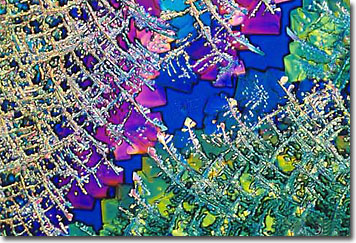Loes Modderman
Betaine-Glycine Mixture
As one of the genetically coded amino acids, glycine stands alone as a protein constituent that lacks a center of chirality, meaning it is not optically active and lacks stereoisomers. Known also as glycin, glycine, the simplest of the amino acids is soluble in both water and alcohol and helps release oxygen required for cell production and the biosynthesis of hormones.

One of the most ubiquitous of the amino acids found in humans, glycine has the ability to readily combine with many toxic substances, rendering them harmless for subsequent excretion, and the biochemical may play a role in the process of tissue repair and wound healing. The primary source of natural glycine is collagen, but it is a constituent of all proteins and helps in fat storage, synthesis of hemoglobin, and reduction of high blood fat and uric acid levels in the body. Other than human-produced glycine, the amino acid may be taken dietarily in fish, meat, beans, and dairy foods that are high in protein.
Beyond a surgical use as an irrigant, other uses for glycine include as a photographic developer, flavor enhancer and masker, pH buffer and stabilizer, and an acid indicator in bacteriology. Glycine, alternatively known as glycocol, aminoethanoic acid, or aminoacetic acid, is considered a "non-essential amino acid" since it can usually be manufactured by the well-nourished body, but has been synthesized in the laboratory. The non-prescription food supplement is marketed in a purified powder form as a growth hormone releaser, for its brain calming effect including treating schizophrenia, as a general detoxifier, and for possible benefits to men with prostrate gland enlargement. Dietary precursors such as glycine may help control the rates of synthesis of serotonin, acetylcholine, dopamine, and norepinephrine in the brain, lending credence to the food-supplement manufacturers' claims for its soothing powers. Crystals of glycine are white, odorless, and form an acidic solution of pH 4.0.
In the past, doctors and nutritionists warned against consuming too many eggs in the diet or risk the chance of heart disease, but that was before some discovered the benefits of a little-known nutrient, betaine. Found naturally not only in eggs and liver, but also in fish, beets, and legumes, betaine is able to reduce the levels of harmful homocysteine in human plasma. Just as the better known vitamins folic acid, B-6, and B-12, betaine in the diet lessens the chances for cardiovascular disease and reduces the risk of giving birth to children with neural tube defects. However, betaine re-methylation is restricted to the liver while folic acid acts throughout the body.
Known also as trimethylglycine, betaine is produced in the human body from choline and the amino acid glycine. Similar in function to the nutritional supplements marketed as SAMe (S-adenosylmethionine), vitamin B-12, and choline, betaine acts as a methyl group donor, which play an important role in normal liver function, detoxification, cellular replication, and probably act in protecting the kidneys from damage. Not to be outdone by nature, pharmaceutical companies have sythesized betaine as betaine hydrochloride, betaine citrate, and betaine aspartate for the health-food market and as Cystadane, for controlling homocysteine in the blood and urine, particularly for people genetically lacking a needed enzyme.
BACK TO LOES MODDERMAN GALLERY
